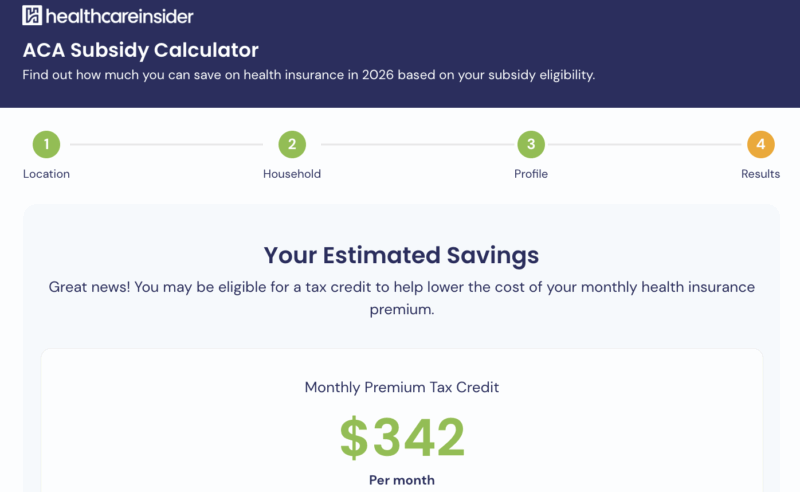Written by Michael LaPick
Healthcare Writer
We want to help you make educated healthcare decisions. While this post may have links to lead generation forms, this won’t influence our writing. We adhere to strict editorial standards to provide the most accurate and unbiased information.
The Affordable Care Act requires that most health insurance plans include coverage for 10 “essential health benefits.” Those covered benefits include hospital services, prescription drugs, pregnancy care, and childbirth. While the requirements apply only to plans available in the marketplace and to fully insured small group and individual plans, many self-insured plans have also adopted the essential health benefits and share the cost of those benefits with their employees.
Prior to the ACA’s implementation in 2014, health plans available on the individual marketplace often excluded certain types of coverage, including maternity care, substance abuse treatment, and mental health. That made it more difficult or more expensive for many people to buy health insurance on their own: They discovered too late that their plan wouldn’t pay for the care they needed or that they had to pay huge premiums for it. The ACA also requires that insurers provide coverage to anyone, regardless of preexisting health conditions.
What You Need to Know
Under the Affordable Care Act all small group and individual health insurance plans must cover 10 essential health benefits.
The level of coverage of those benefits varies, based on each state’s benchmark plan.
Insurers cannot impose an annual dollar limit or lifetime maximum on essential health benefits.
What Are the 10 Essential Health Benefits?
- Ambulatory patient services. This is the outpatient care, from doctor’s visits to same-day surgery, that you receive without being admitted to a hospital.
- Emergency services. Insurance companies cannot charge you more for going to an out-of-network hospital’s emergency room in the case of a true emergency, such as a suspected heart attack or stroke, nor can they require prior approval for emergency room visits.
- Hospitalization. This benefit includes surgery or other overnight, in-patient stays at a hospital.
- Pregnancy, maternity, and newborn care. Insurance must cover medical services for you and your child, both before and after birth, as well as the cost of the delivery itself. Insurers must also cover birth control and breastfeeding services.
- Mental health and substance use disorder services. Behavioral health treatment, such as counseling or psychotherapy, is a part of this benefit.
- Prescription drugs. While insurers don’t cover all drugs, they must offer a formulary (approved list of medications) for which they’ll pay a portion of the costs. You can find a list of the medicines that your insurer covers by visiting its website.
- Rehabilitative and habilitative services and devices. This benefit includes devices or services aimed at helping people with chronic conditions, disabilities, or injuries regain or improve skills.
- Laboratory services. Coverage includes tests that doctors might run to aid in diagnosis.
- Preventive and wellness services and chronic disease management. Preventive and wellness care covers routine doctor’s visits, such as annual exams and vaccinations. If you get preventive health services, such as a pap test, from an in-network provider, their services are free. However, not every service that you receive at a checkup is covered, so check your benefits before you go.
- Pediatric services. In addition to the above benefits, children’s benefits must include vision and dental care.
Do Essential Health Benefits Vary from State to State?
Each state has a “benchmark plan,” which sets the standards for the minimum level of coverage that all plans must offer and determines which services in each category get covered. While the exact services and cost-sharing arrangements vary, state benchmark plans mandate coverage at the level of a “typical employer plan.”
This means that all 10 benefits are covered in every state, but the extent of coverage varies. Kansas’s benchmark plan, for example, covers 20 visits per year for speech rehabilitation, while Wisconsin’s plan covers 90. Other states may have slightly different formularies, which means they cover a different set of prescription drugs. While the essential health benefits are the minimum, many plans offer coverage that goes beyond these requirements.
From 2017 to 2019, a state’s benchmark plan was a plan sold in that state in 2014. This year, states could either maintain their benchmark plan from 2017, use another state’s benchmark plan from 2017, replace one or more of the required categories with those from another state’s plan, or create an entirely new benchmark plan. Since the benchmark plan can change, it’s important to review your plan each year to know what’s covered.
While many insurance plans offered by large employers cover essential health benefits, they’re not required to do so. Employers who offer such plans may not impose an annual or lifetime cap on those benefits, but annual or lifetime limits are allowed on benefits that do not fall into the 10 categories of essential health benefits. Employers who self-insure can choose any state’s benchmark as a guide for the benefits they offer, but those with insured plans must use the benchmark of their home state.
How Are Essential Benefits Covered?
Once you’ve hit the out-of-pocket limit (excluding premiums) for the year for essential health benefits, your health plan will cover 100% of the cost of those benefits. The out-of-pocket maximum for 2020 is $8,150 for individuals and $16,300 for families. For 2021, the limits are $8,550 for individuals and $17,100 for families.
It’s important to understand essential health benefits in order to make the most of your health insurance plan. Still, even if your plan covers these benefits, your premiums and copays may vary, so it’s important to take a close look at the details of your existing plan.
Knowing about essential health benefits can also make it easier to choose a new health insurance plan if you’re purchasing an Obamacare plan. The best plan for you depends on your health, your financial circumstances, and the services provided by a specific plan. If you’re purchasing a plan via the marketplace, you may be eligible for a subsidy to offset the premiums, depending on your income.
Thank you for your feedback!
U.S. Government Website for the Health Insurance Marketplace. “Essential Health Benefits – Glossary” healthcare.gov (accessed September 15, 2020).
Kaiser Family Foundation. “Employer Health Benefits: 2019 Annual Survey Kaiser Family Foundation.” kff.org (accessed September 15, 2020)
Center for Budget Policy & Priorities. “Essential Health Benefits Under Threat.” cbpp.org (accessed September 15, 2020)
U.S. Government Website for the Health Insurance Marketplace. “Health Coverage if you’re Pregnant, Plan to Become Pregnant, or Recently Gave Birth.” healthcare.gov (accessed September 23, 2020)
Centers for Medicare and Medicaid Services. “Lifetime and Annual Limits.” cms.gov (accessed September 15, 2020)
U.S. Government Website for the Health Insurance Marketplace. “Getting Emergency Care.” healthcare.gov (accessed September 15, 2020)
U.S. Government Website for the Health Insurance Marketplace. “What Marketplace Health Insurance Plans Cover.” healthcare.gov (accessed September 15, 2020)
What Marketplace Health Insurance Plans Cover
What Marketplace Health Insurance Plans Cover
U.S. Government Website for the Health Insurance Marketplace. “Getting Prescription Medications.” healthcare.gov (accessed September 15, 2020)
What Marketplace Health Insurance Plans Cover
Center for Budget Policy & Priorities. “Essential Health Benefits Under Threat.” cbpp.org (accessed September 15, 2020)
U.S. Government Website for the Health Insurance Marketplace. “Preventive Health Services.” healthcare.gov (accessed September 15, 2020)
“Essential Health Benefits Under Threat”
Corlette, Sabrina and Joel Ario. “Updating the Essential Health Benefit Benchmark Plan: An Unexpected Path to Fill Coverage Gaps?” State Health and Value Strategies, September 11, 2020. shvs.org (accessed September 15,2020)
Centers for Medicare & Medicaid Services “Information on Essential Health Benefits (EHB) Benchmark Plans.” cms.gov (accessed September 23, 2020)
“Information on Essential Health Benefits (EHB) Benchmark Plans.”
HAP. “Essential Health Benefits.” hap.org (accessed September 15, 2020)
United Healthcare. “Essential Health Benefits.“ uhc.com (accessed September 15, 2020)
U.S. Government Website for the Health Insurance Marketplace. “Out-of-Pocket maximum/limit.” healthcare.gov (accessed September 15, 2020)







